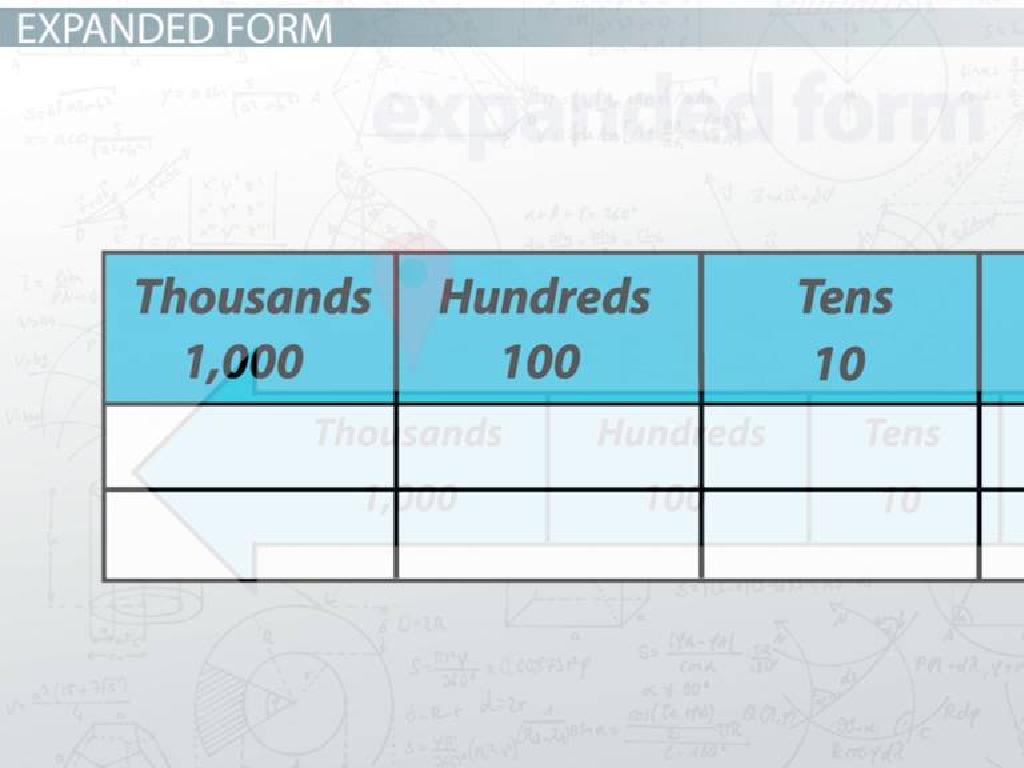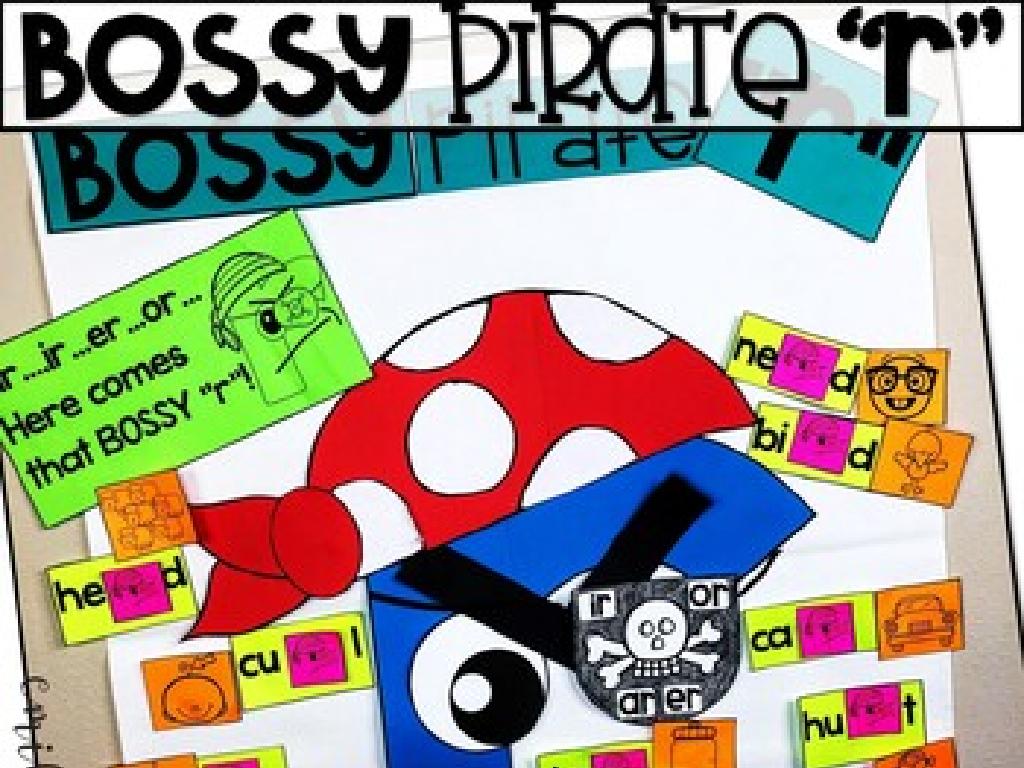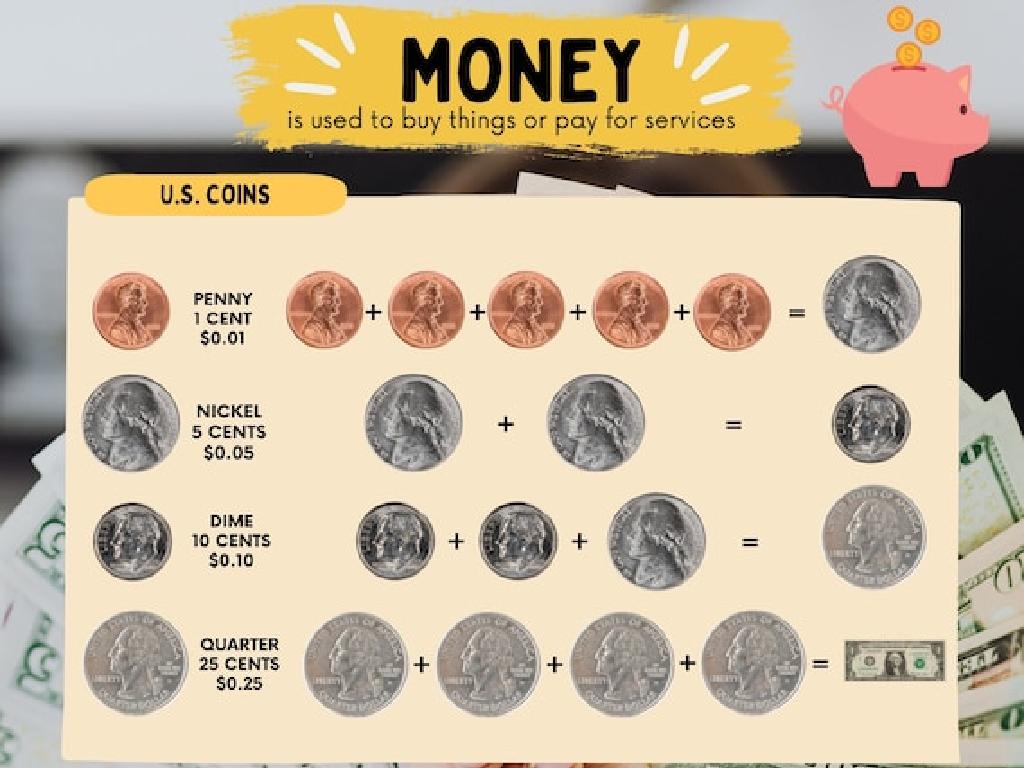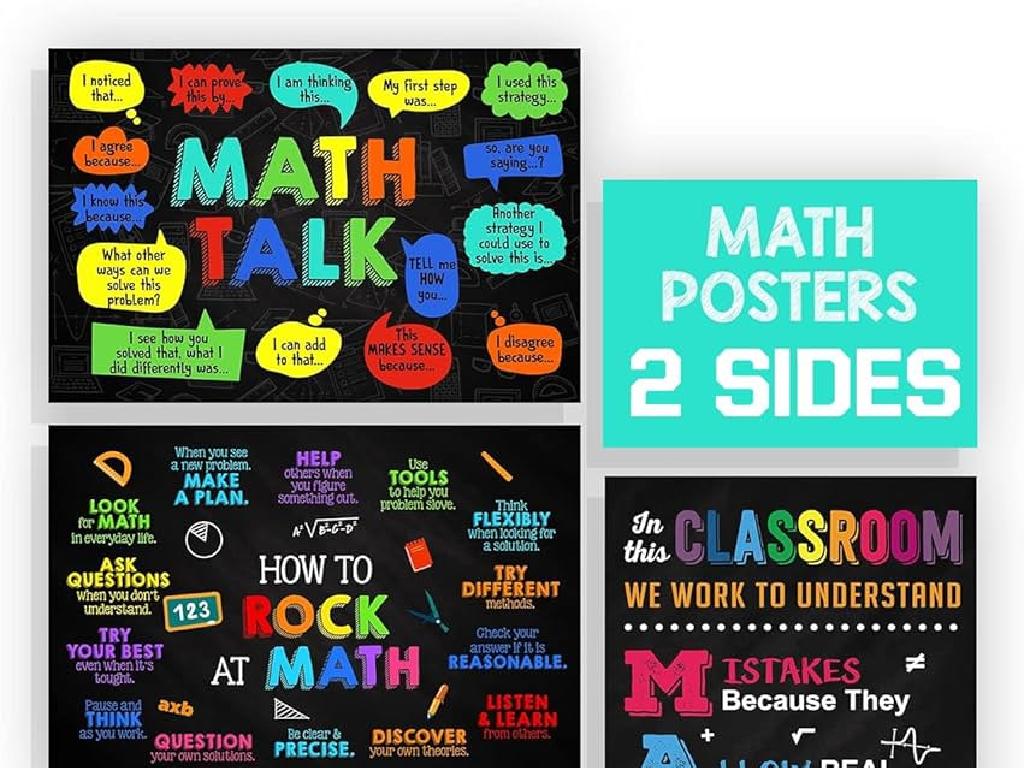Objects On A Coordinate Plane
Subject: Math
Grade: Sixth grade
Topic: Coordinate Plane
Please LOG IN to download the presentation. Access is available to registered users only.
View More Content
Welcome to Coordinate Planes!
– Explore the coordinate plane
– A two-dimensional plane for graphing points, lines, and curves.
– Why coordinates matter
– Used in maps, video games, and graphs.
– Review: X and Y axes
– X-axis is horizontal, Y-axis is vertical.
– Real-world coordinate use
– Examples: GPS navigation, architecture.
|
This slide introduces students to the concept of the coordinate plane, a fundamental tool in mathematics that is used to graphically represent and analyze relationships between numbers. Emphasize the importance of the coordinate plane in various real-life applications such as navigation, computer graphics, and engineering. Review the basics of the X and Y axes, ensuring students understand that the X-axis runs horizontally and the Y-axis runs vertically. Provide examples of how coordinates are used in everyday life to solidify their understanding. Encourage students to think of other areas where they might encounter coordinate planes.
Understanding Coordinates on a Plane
– Coordinates: A Definition
– Coordinates are numbers that determine a point’s position.
– Writing Coordinates: (x, y)
– The first number (x) is horizontal, the second (y) is vertical.
– Locating Points: An Example
– For example, (3, 4) means 3 steps right, 4 steps up.
|
This slide introduces the concept of coordinates, which are essential for understanding the coordinate plane. Start by defining coordinates as a set of numbers that specify the exact location of a point on a plane. Explain that the first number, known as the x-coordinate, represents the position along the horizontal axis, while the second number, the y-coordinate, represents the position along the vertical axis. Use a simple example, such as locating the point (3, 4) on the plane, to illustrate how to move right or left for the x-coordinate and up or down for the y-coordinate. Encourage students to practice by plotting several points to reinforce the concept.
Plotting Points on the Coordinate Plane
– Steps to plot points
– Locate the x-axis, then the y-axis, and place your point where they meet.
– Practice with an example
– Example: Plot (3, 2) starting from the origin, move 3 steps right (x) and 2 steps up (y).
– Class exercise: plot points
– Each student will receive different coordinates to plot on their graph.
|
Begin by explaining the coordinate plane and the axes. Demonstrate plotting points with a step-by-step guide. Start at the origin, move along the x-axis for the first number, and then parallel to the y-axis for the second number. Provide a practice example for the class to follow along. For the class exercise, distribute different sets of coordinates to each student to plot on their own graph paper. This will help them become familiar with the process. Circulate the room to assist and ensure understanding. Possible coordinates for the exercise could be (1,4), (2,3), (5,1), (-3,-2), and (-4,5).
Exploring Objects on a Coordinate Plane
– Representing objects on a plane
– Points, lines, and shapes can be plotted using coordinates (x, y).
– Plotting shapes on the grid
– Shapes like triangles and rectangles have vertices that can be connected on a grid.
– Coordinate plane in real life
– Maps and video games use coordinate planes to locate objects.
– Activity: Find the coordinates
|
This slide introduces students to the concept of representing various objects on a coordinate plane. Begin by explaining how points are plotted using x (horizontal) and y (vertical) coordinates. Then, show how simple shapes like triangles and rectangles can be drawn by connecting points on the plane. Provide real-life examples, such as how maps use a similar system to pinpoint locations. For the class activity, have students plot given points to form a shape or find the coordinates of specified objects on a pre-drawn grid. This will help them understand the practical application of coordinate planes. Provide at least four different shapes or objects for the students to work with, ensuring a variety of experiences within the classroom.
Exploring Quadrants on a Coordinate Plane
– Four quadrants of a coordinate plane
– Quadrants are the four sections made by the x and y axes.
– Characteristics of each quadrant
– Each quadrant has a unique combination of positive and negative values.
– Naming the quadrants I, II, III, IV
– Quadrant I: (+, +), Quadrant II: (-, +), Quadrant III: (-, -), Quadrant IV: (+, -).
– Plotting points in quadrants
– Given a point (x, y), determine its quadrant by the signs of x and y.
|
This slide introduces students to the concept of quadrants on a coordinate plane. Begin by explaining that the intersection of the horizontal (x-axis) and vertical (y-axis) divides the plane into four sections called quadrants. Discuss the characteristics of each quadrant, noting that they are numbered counterclockwise starting from the top right. Emphasize the sign of the coordinates in each quadrant: Quadrant I (positive x and y), Quadrant II (negative x, positive y), Quadrant III (negative x and y), and Quadrant IV (positive x, negative y). Use examples to show how to identify in which quadrant a point lies based on the signs of its coordinates. Encourage students to practice by plotting points and identifying their quadrants.
Reflection and Symmetry on the Coordinate Plane
– What is reflection in math?
– Reflection is flipping an object across a line without changing its size or shape.
– Symmetry on coordinate planes
– Symmetry occurs when two halves of a whole mirror each other.
– Activity: Reflect points across an axis
– Use graph paper to practice reflecting points across the x-axis and y-axis.
|
This slide introduces students to the concepts of reflection and symmetry within the context of a coordinate plane. Begin by explaining reflection as a ‘flip’ over a line, where the object is the same but the position is mirrored. Discuss symmetry, especially line symmetry, where one half of an object is the mirror image of the other. For the activity, provide students with graph paper and instruct them to plot points and practice reflecting them across both axes. This hands-on activity will help solidify their understanding of how reflection works in a coordinate plane. Offer several examples and encourage students to try reflecting different shapes to observe the symmetry.
Coordinate Plane Word Problems
– Apply knowledge to solve problems
– Use coordinates to find locations and distances
– Read and interpret word problems
– Understand the question and information given
– Group activity: problem-solving
– Work in teams to tackle different problems
– Discuss solutions and methods
|
This slide is aimed at applying students’ understanding of the coordinate plane to solve real-world problems. Start by explaining how to use coordinates to find specific locations and measure distances between points. Emphasize the importance of carefully reading word problems to extract necessary information and understand what is being asked. For the group activity, divide the class into small teams and provide each with a unique word problem that requires using the coordinate plane to solve. Encourage students to discuss their problem-solving strategies and solutions with the class. This collaborative approach not only reinforces their knowledge but also enhances their communication and teamwork skills. Provide guidance and support as needed during the activity.
Class Activity: Create Your Own Coordinate Art!
– Understand the Coordinate Art Project
– Select objects to plot on the plane
– Choose simple objects like a house or a tree
– Plot points to create your art
– Use x and y coordinates to place each point
– Present your coordinate art to the class
– Explain your choice of objects and the coordinates used
|
This activity is designed to help students apply their knowledge of the coordinate plane in a fun and creative way. Students should first understand the instructions for the Coordinate Art Project, which involves plotting points on a coordinate plane to create a picture. Encourage them to start with simple objects that can be easily represented with straight lines and shapes. As they plot each point, they should be mindful of the x (horizontal) and y (vertical) coordinates. After completing their art, students will share their creations with the class, explaining the objects they chose and how they used the coordinate plane to represent them. This will reinforce their understanding of coordinates and give them practice in presenting mathematical concepts. Provide guidance on plotting points and encourage creativity. Possible activities for different students could include creating geometric shapes, plotting their initials, or even making a simple map.






